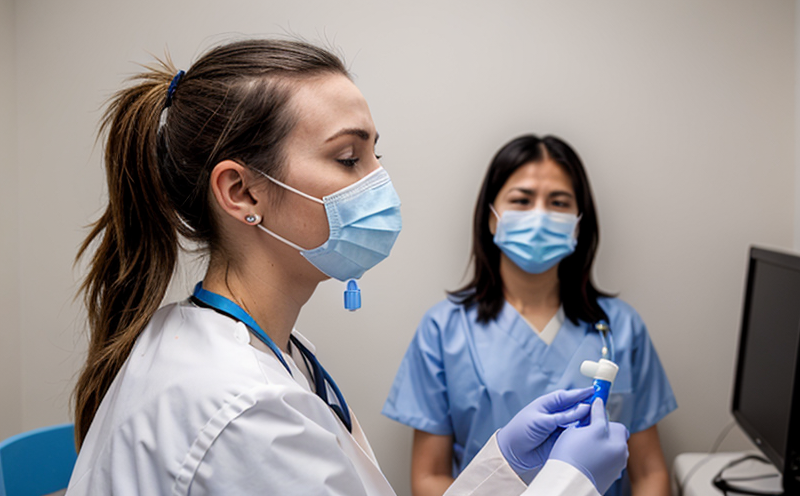Respiratory Adenovirus Testing in Horses
In the realm of clinical and healthcare testing, particularly within the category of respiratory disease testing, identifying respiratory adenoviruses is crucial for understanding the etiology and managing the treatment of respiratory infections in horses. Respiratory adenoviruses are a significant cause of respiratory illness in equine populations, often leading to clinical signs such as nasal discharge, coughing, fever, and lethargy.
The importance of this testing cannot be overstated for quality managers and compliance officers responsible for ensuring the health and well-being of horses. Proper identification of these viruses allows for early diagnosis and intervention, which can significantly reduce the spread of infection within stable environments. This service is particularly valuable in high-density populations such as racing stables or large breeding farms.
The testing process involves collecting nasal swabs from affected animals. These samples are then processed using molecular diagnostic techniques to detect the presence of adenovirus DNA. The molecular assays used for this purpose are highly sensitive and specific, ensuring accurate identification even in the early stages of infection. This allows for timely treatment with antiviral medications or supportive care as necessary.
Understanding the application standards that govern this testing is essential for compliance officers and R&D engineers working within the sector. Testing must adhere to international standards such as ISO 15189, which sets quality management requirements for medical laboratories. Additionally, adherence to guidelines from organizations like the World Organisation for Animal Health (OIE) ensures consistency in testing methods across different regions.
The accuracy of these tests is further enhanced by strict quality control measures and proficiency testing programs. These ensure that results are reliable and reproducible, which is critical in a field where timely and accurate diagnosis can mean the difference between successful treatment and prolonged illness.
Applied Standards
| Standard | Description |
|---|---|
| ISO 15189:2017 | Quality management for bodies providing medical laboratory services and related organizations. |
| EN ISO/IEC 17025:2017 | General requirements for the competence of testing and calibration laboratories. |
| OIE Guidelines on Laboratory Diagnostics | Guidelines for laboratory practices in veterinary medicine, including respiratory adenovirus diagnostics. |
Benefits
- Early detection and diagnosis of respiratory adenoviruses.
- Precision in identifying the specific strain responsible for infection.
- Avoidance of unnecessary treatments by confirming viral presence.
- Reduction in the spread of infectious disease within stable environments.
- Support for evidence-based decision-making regarding treatment and isolation protocols.
Why Choose This Test
The respiratory adenovirus test offers several advantages that make it a preferred choice among quality managers, compliance officers, R&D engineers, and procurement professionals. Firstly, the molecular diagnostic approach used in this service provides rapid results, allowing for prompt initiation of treatment and management strategies. Secondly, the high specificity of these tests ensures that only true positives are identified, minimizing the risk of false-positive results that could lead to unnecessary interventions.
Thirdly, adherence to international standards such as ISO 15189 and OIE guidelines ensures that the test outcomes are reliable and consistent across different laboratories. This reliability is crucial for maintaining high standards in equine healthcare practices. Lastly, the use of advanced molecular techniques enhances the sensitivity of the tests, enabling detection even at low viral loads.
The ability to quickly and accurately identify respiratory adenoviruses can have a significant impact on disease control efforts within horse populations. By providing precise diagnosis, this test supports proactive management strategies that aim to minimize the spread of infection and improve overall health outcomes.





